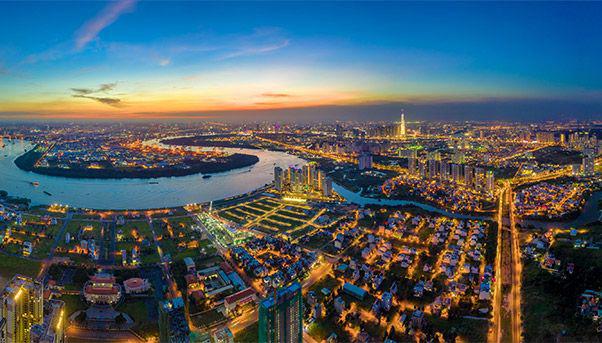
Infrastructure spending is increasingly more important, and yet governments have increasingly less money to spend. The role of private individuals, therefore, is crucial to the development of the sector. «The infrastructure sector is of great interest to investors», explains Stefano Gatti, Associate Professor at the Department of Finance at Milan’s Bocconi University, because it guarantees safe long-term returns as well as a positive impact on people’s quality of life. Sustainable mobility, development of megacities, intelligent use of water resources: these are just some of the areas that will attract large investments in the coming years. The goal is to make up for some of the past delays.
Professor, we often talk about an investment figure for an “infrastructure gap” at the world level. What is the real amount, and why is it so important to spend it?
«McKinsey estimates an infrastructure gap of “extra spending” needed between now and 2030 of about $5.7 trillion, while Oxford Economics calculates a gap of $9.4 trillion in 2040. These are huge figures: if we look just at the USA and Europe, we are talking about a figure of between $1-1.5 trillion of spending needed in strategic sectors such as transport, energy and water.
This gap exists because today’s infrastructure is incapable of meeting future demands, also in terms of long term, environmentally sustainable growth.
In a world with no financial constraints, spending to bridge this ‘infrastructure gap’ would be covered by the state, because infrastructure is the foundation of economic activity. However, in the developed world, many industrialised countries lack adequate public resources to close these gaps. The coffers are empty. This means that private investors have to step in».
What are the megatrends that will affect investments in the coming years?
«There are several, although in my opinion three in particular will be the most important.
The first concerns demographic trends, because the societies in which we live will be characterised by an increasing polarisation of the population. Around 50% of the world population is so-called Millennials, according to many studies. On the other hand, the United Nations’ demographic projections confirm that the number of people over 60 will rise from 900 million to 2.1 billion by 2050. Society is becoming polarised therefore between young and old, and with implications for infrastructure. On the one hand, the Millennials will be much more attentive to environmental issues, aimed at questioning the status quo, and in some cases this could be a negative factor for sectors with large environmental impacts. On the other hand, we will have to find solutions for an aging population: hospitals and nursing homes, but also urban design, city neighbourhoods dedicated to elderly people, and transport that can better connect the elderly population.
The second major trend is environmental, involving the migration from fossil fuels to renewable energy sources. As a case in point, 2016 was the first year when new installed renewable energy generation capacity exceeded new fossil fuel installation. Coal and oil are destined to be marginalised. In this context, the issue of water emergency takes on particular importance, because the United Nations data tell us that of this $5.7 trillion in infrastructure spending needed, $1.1 trillion is for the water sector. Currently 40% of the population of sub-Saharan Africa must ration its water. The same is true for 30% of people in southern Asia.
The third trend is the new role of transport, which is linked to the themes of urbanisation and the development of smart cities. The data confirm that a significant number of humans will migrate from the countryside. In China alone, an estimated 600 million people have to migrate from the countryside to the megacities within the next few years. Governments will need to re-think urban design and transport routes, and cities will have to decarbonise transport and focus on sustainable mobility».
How are investments affected by climate change, more generally megatrends like the birth of megacity?
«Today, private investors are increasingly interested in the infrastructure sector, because these are long-term investments. They require large capital expenditures at the beginning but then – since they provide essential services and are therefore highly regulated — they become natural candidates to generate a fairly stable and attractive cash flow for an investor. If I am a long-term investor with long-term payment commitments, this type of investment makes sense.
At a time when more traditional investments are less appealing, infrastructure projects are attracting more attention, from asset managers as well as from long term players like insurers, foundations, pension funds, etc. Up until a decade ago, private investors were not looking at this sector. Now it’s a strong focus».

What impact will the Progetto Italia merger have on the Italian infrastructure sector?
«The European and international infrastructure sector is undergoing a significant consolidation process. Companies are trying to create economies of scale. This is true at an international level, and also on a national level, where companies are smaller.
The gap between the size of Europe’s largest infrastructure company and Italy’s biggest player is still quite wide and needs to be filled. The fact that Progetto Italia has used the opportunity created by the financial difficulty of an important group like Astaldi demonstrates the need to grow in a planned and intelligent way. Growing in size to become an international competitor is a positive development».
Does state-backed lender Cassa Depositi e Prestiti’s investment in Progetto Italia show a growing interest on the part of large international investors?
«Cassa Depositi e Prestiti is often referred to as ‘Italy’s sovereign wealth fund.’ These funds are among those potentially most interested in infrastructure, because they are necessarily a ‘patient’ investor, with a goal of generating development, jobs and well-being in their own country. As a long-term investor, they are called on to try to create long-term growth conditions. An alliance between private investors and a sovereign fund is a chance for synergy between the development needs of the nation, and the goal of investors to achieve a good risk/return ratio».
According to Bocconi’s “Infrastructure Manifesto,” Italy has money to spend for infrastructure, but it must be spent effectively …
«The idea behind the Manifesto was to gather different views on industrial policy. One of the aspects that emerged is that investment potential does exist. Long-term investors, such as pension funds and foundations, are plentiful in Italy. It is clear that greater support for infrastructure spending is possible. From this point of view, there are financial resources that can be channeled to this sector. The fundamental problem is that the regulatory framework and quality of the institutions must be impeccable in order to attract long term investment. Investors cannot be told: «Come invest, and the day afterwards we will change the rules of the game». If I invest, I need legal certainty, impartial and qualified institutions, and non-impedimental regulatory support that does not take a negative view infrastructure investment».

